Crafting Chatbots for E-commerce Success in Online Retail
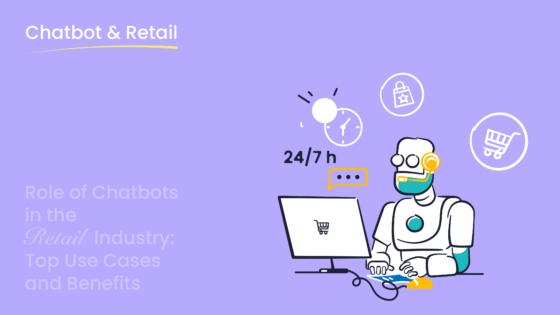
E-commerce chatbots have revolutionized online retail by streamlining customer interactions and enhancing user experiences. These AI-powered tools save businesses time and resources while meeting customer demands for instant support. For instance, chatbots held a market share of $12 billion by 2023 and are projected to save organizations up to 2.5 billion work hours by 2024. Tools like Sobot's chatbot for ecommerce empower businesses to provide 24/7 assistance, boost conversions, and improve customer satisfaction. With 80% of retail businesses adopting chatbots, their role in shaping the future of ecommerce is undeniable.
Understanding E-commerce Chatbots
What Are E-commerce Chatbots?
E-commerce chatbots are AI-powered tools designed to assist customers during their online shopping journey. These virtual assistants simulate human-like conversations to answer questions, provide recommendations, and guide users through various processes. By integrating with platforms like websites, apps, and messaging services, they ensure seamless communication between businesses and customers.
The adoption of chatbots in e-commerce has grown significantly. For example, 76% of online retailers have implemented or plan to integrate chatbots into their operations. These tools handle straightforward inquiries 80% of the time, allowing businesses to focus on more complex tasks. Additionally, 47% of consumers are open to making purchases through bots, highlighting their growing acceptance in the retail space.
How Do E-commerce Chatbots Work?
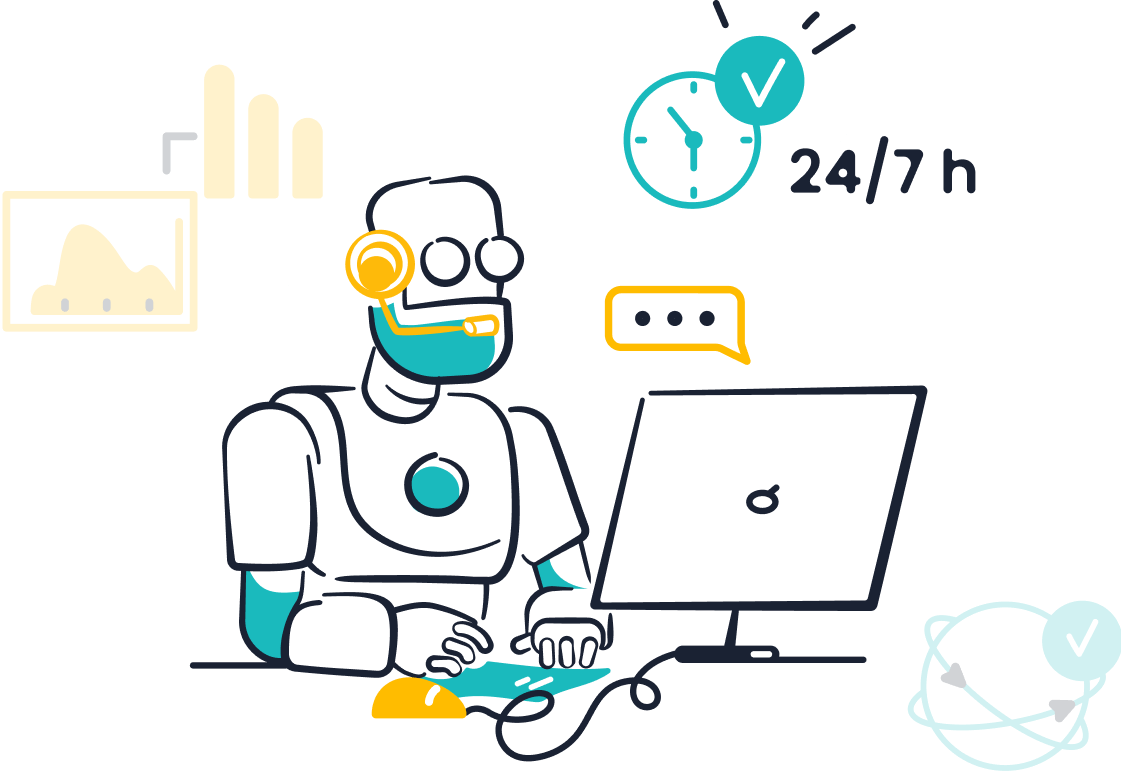
E-commerce chatbots operate using a combination of natural language processing (NLP), machine learning, and pre-programmed scripts. When a customer interacts with a chatbot, the system analyzes the input, identifies the intent, and provides an appropriate response. Advanced chatbots, like Sobot's AI Chatbot, leverage multilingual capabilities and a knowledge base built from various sources to deliver accurate answers.
These bots can perform tasks such as recommending products, tracking orders, and even managing returns. For instance, 64% of consumers value chatbots for their 24/7 availability, while 48% prioritize issue resolution over personality. This efficiency makes chatbots indispensable for modern e-commerce businesses.
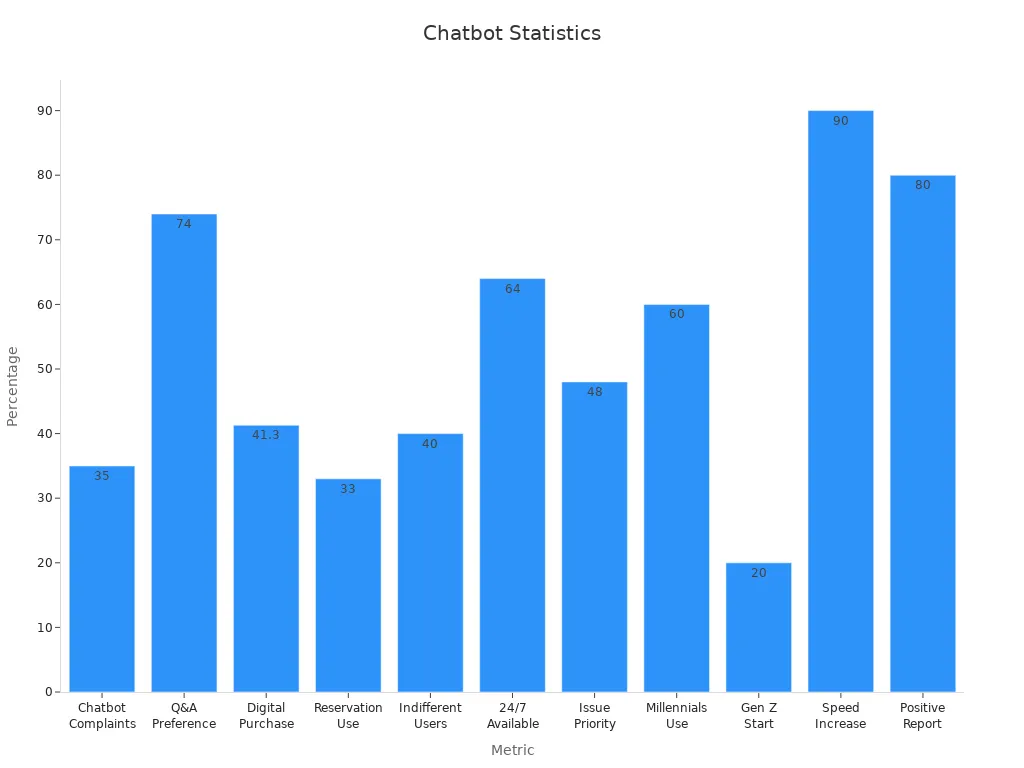
The Role of AI in Chatbots for E-commerce
AI chatbots for ecommerce have transformed how businesses interact with customers. By analyzing user data, these bots offer personalized experiences, such as tailored product recommendations. For example, H&M’s chatbot increased customer satisfaction by 30% by providing real-time stock updates and shopping assistance.
AI also enhances conversational commerce by enabling bots to understand natural language queries. This capability improves product searches and boosts conversions. Sephora’s chatbot, for instance, achieved a 15% sales increase by offering personalized beauty advice. With tools like Sobot's chatbot for ecommerce, businesses can automate interactions, reduce costs, and improve customer satisfaction.
Benefits of Using AI Chatbots for E-commerce

24/7 Customer Support and Availability
AI chatbots ensure your e-commerce business stays open around the clock. Unlike human agents, chatbots never need breaks, allowing you to provide uninterrupted support to your customers. This constant availability improves customer satisfaction and builds trust. For example, 70% of customer interactions can be automated with AI-powered systems, significantly reducing the need for human intervention. Additionally, 79% of businesses believe automation is essential for delivering a great customer experience.
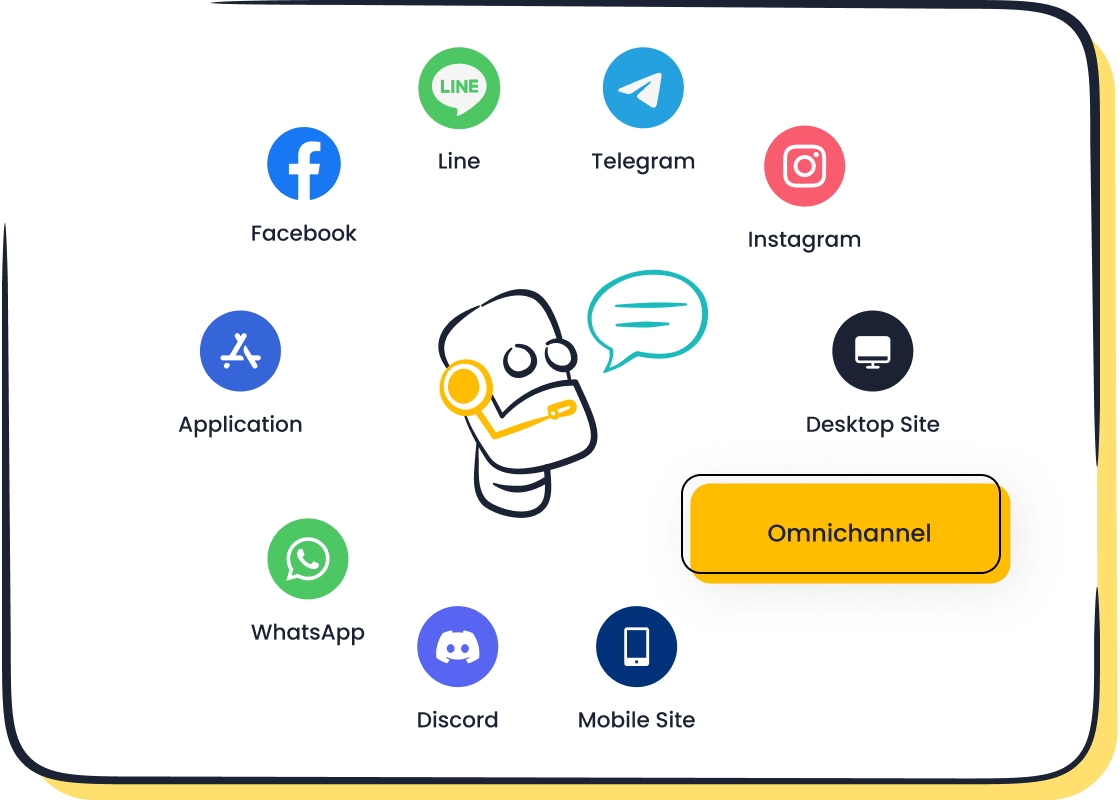
With tools like Sobot's chatbot for ecommerce, you can handle inquiries across multiple channels, such as WhatsApp and SMS, ensuring customers receive help whenever they need it. This omnichannel approach not only enhances availability but also ensures seamless communication. By freeing up your team from repetitive tasks, chatbots allow them to focus on more complex customer issues, improving overall efficiency.
| Statistic | Impact on Customer Service Availability |
|---|---|
| 70% of contacts can be automated with an AI-powered system. | Increases availability by reducing the need for human agents. |
| 79% of businesses think automation is essential for a good customer experience. | Highlights the importance of 24/7 support in customer satisfaction. |
| 80% of customer support specialists believe AI can help them spend less time on manual tasks. | Frees up time for agents to focus on more complex inquiries. |
Cost Efficiency and Operational Savings
AI chatbots offer a cost-effective solution for e-commerce businesses. They reduce the need for large customer service teams by automating repetitive tasks. According to Chatbots Magazine, chatbots can cut customer service costs by up to 30%. Additionally, businesses adopting chatbot strategies are projected to save $11 billion annually by 2023. These savings allow you to allocate resources to other critical areas of your business.

Sobot's AI chatbot is designed to maximize efficiency. It autonomously handles regular queries, saving up to 50% on additional agent costs. By triaging inquiries 24/7, it ensures your operations run smoothly without incurring extra expenses. This makes it an ideal tool for businesses looking to scale while keeping costs under control.
| Source | Evidence |
|---|---|
| Chatbots Magazine | Chatbots can reduce customer service costs by up to 30%. |
| Coforge | Adoption of chatbots will save businesses $11 billion annually by 2023. |
| Springer | Chatbots can decrease global business costs related to customer service inquiries by 30%, amounting to $1.3 trillion. |
Personalized and Engaging Customer Interactions
AI chatbots excel at creating personalized experiences, which are highly valued by online shoppers. By analyzing customer behavior, these bots can offer tailored product recommendations, increasing the likelihood of a purchase. For instance, AI-powered recommendations contribute to 35% of Amazon's annual sales. Similarly, Netflix saved $1 billion in lost revenue by using a personalized recommendation engine.
Sobot's chatbot tools take personalization to the next level. They use a knowledge base built from various sources to provide accurate and conversational responses. This approach not only enhances customer engagement but also boosts satisfaction. After implementing chatbots, businesses have reported a 15% increase in sales and a 20% boost in customer retention. These results highlight the importance of integrating AI chatbots into your e-commerce strategy.
| Metric | Before Chatbot Implementation | After Chatbot Implementation |
|---|---|---|
| Average Order Processing Time | 7 minutes | 2 minutes |
| Order Accuracy Rate | 90% | 98% |
| Customer Satisfaction Score | 75% | 90% |
Boosting Customer Retention and Loyalty
Retaining customers is crucial for the long-term success of your ecommerce business. Loyal customers not only make repeat purchases but also become advocates for your brand. Chatbots play a pivotal role in fostering this loyalty by offering personalized and timely support.
One way chatbots enhance retention is by managing loyalty programs efficiently. For example, Maria Jenkins, Marketing Manager of Trendy Styles Retail, shared that their loyalty program chatbot significantly improved customer retention. It handles rewards and membership inquiries seamlessly, saving time for the support team. Similarly, John Carter, CEO of Urban Outfitters, highlighted how their chatbot's instant responses to loyalty benefit queries delighted customers and boosted engagement.
Predictive analytics in chatbots can also identify at-risk customers. A telecom company reduced churn by 20% by offering timely incentives to these customers. In ecommerce, chatbots providing instant support led to a 30% increase in repeat customers. These examples demonstrate how chatbot strategies can transform customer retention efforts.
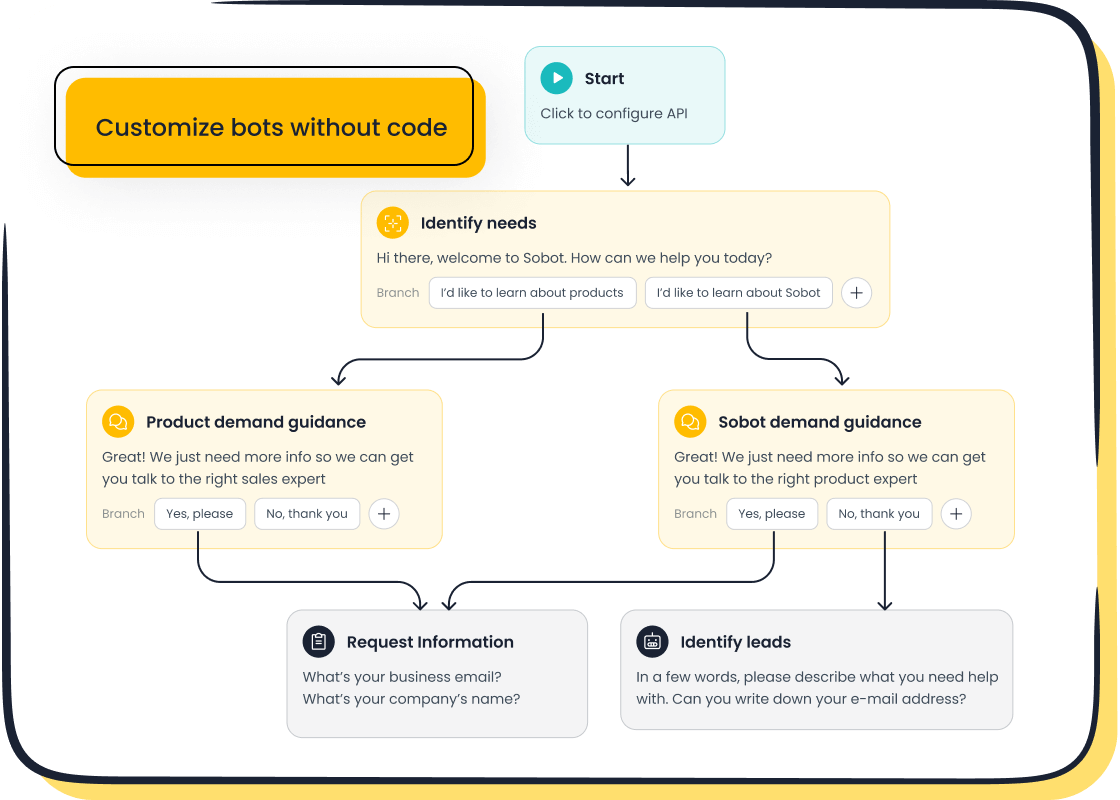
Sobot's chatbot for ecommerce takes this a step further. It uses AI to analyze customer behavior and deliver personalized experiences. Whether it's recommending products based on past purchases or sending proactive messages about loyalty rewards, Sobot's chatbot ensures customers feel valued. This approach not only strengthens relationships but also encourages repeat business.
By integrating chatbots into your ecommerce strategy, you can create a seamless and engaging experience for your customers. This builds trust and loyalty, ensuring they return to your store time and again.
How to Create the Best E-commerce Chatbots
Defining Goals and Objectives for Your Chatbot
To build a chatbot that delivers results, you need to start with clear goals. Define what you want your chatbot to achieve. For instance, do you want it to reduce response times, improve customer satisfaction, or increase conversions? Identifying specific tasks, such as automating FAQs or assisting with product recommendation, ensures your chatbot aligns with your business needs.
Set measurable objectives to track success. For example, aim for a 71% resolution rate or a 90% response speed. These metrics help you refine your chatbot strategies over time. Businesses that define clear goals often see significant improvements in customer interactions. For instance, Sobot's chatbot for ecommerce helps businesses automate repetitive tasks, saving up to 50% on operational costs while boosting customer satisfaction scores to 97%.
Choosing the Right Chatbot Platform (e.g., Sobot Chatbot)
Selecting the right platform is crucial for creating the best ecommerce chatbots. Look for a solution that aligns with your business requirements. Platforms like Sobot offer AI-powered chatbots with multilingual support, 24/7 availability, and seamless omnichannel integration. These features ensure your chatbot can handle diverse customer needs effectively.
Sobot's chatbot tools stand out for their ease of use. With a no-coding-required interface, you can design and deploy workflows effortlessly. Additionally, its advanced AI capabilities enable personalized responses, enhancing engagement and boosting conversions by 20%. By choosing a robust platform like Sobot, you can streamline customer interactions and improve the overall shopping experience.
| Metric | Value |
|---|---|
| Customer satisfaction score (CSAT) | 97% |
| Problem resolution rate | 85% |
| Positive feedback rate | 96%+ |
Designing a User-Centric Chatbot Interface
A user-centric design ensures your chatbot provides a seamless shopping experience. Focus on simplicity and clarity. Make the interface visually appealing and easy to navigate. Incorporate accessibility features to cater to all users, including those with disabilities.
Effective chatbot tools prioritize natural conversations. Use Natural Language Processing (NLP) to make interactions feel human-like. For example, Sobot's AI chatbots leverage NLP to understand user intent and provide accurate responses. Feedback mechanisms, such as satisfaction surveys, can help you refine the chatbot's performance. Metrics like user engagement rates and bounce rates offer valuable insights into how well your chatbot meets user expectations.
| Metric | Description |
|---|---|
| User Engagement Rate | Percentage of users who interacted with the chatbot. |
| Customer Satisfaction Score | Percentage of users who found the chatbot useful, often measured through CSAT/NPS. |
| Bounce Rate | How long users stay on the site and how many pages they visit because of the chatbot. |
By focusing on user needs and preferences, you can build a chatbot that not only enhances customer satisfaction but also drives business growth.
Must-Have Features for E-commerce Chatbots
To build a chatbot that truly enhances your e-commerce business, you need to focus on features that deliver value to both you and your customers. Here are the essential elements every e-commerce chatbot should have:
-
Omnichannel Support: Your chatbot should operate seamlessly across platforms like WhatsApp, SMS, and social media. This ensures customers can interact with your business on their preferred channels.
-
Personalized Product Recommendations: AI chatbots analyze customer behavior to suggest products tailored to individual preferences. This feature not only improves the shopping experience but also boosts sales.
-
Cart Recovery Assistance: A chatbot that reminds customers about abandoned carts can significantly reduce lost sales. For example, businesses using cart recovery strategies have seen up to a 20% increase in conversions.
-
Order Tracking and Updates: Customers value real-time updates on their orders. A chatbot that provides instant order status information enhances satisfaction and builds trust.
-
Multilingual Capabilities: Serving a global audience requires a chatbot that communicates in multiple languages. This feature ensures inclusivity and better customer interactions.
-
Analytics and Reporting: Metrics like conversion rates, average order value, and recovered carts help you measure your chatbot's impact. For instance, tracking user interactions can reveal patterns that improve chatbot strategies.
| Metric | Description |
|---|---|
| Average Order Value (AOV) | The average amount a customer spends when placing an order, crucial for determining marketing strategies. |
| User Interactions | Understanding user conversation patterns helps in tailoring the chatbot to meet customer preferences. |
| Recovered Carts | Chatbots can help reduce cart abandonment by reminding customers about their carts. |
| Conversion Rate | A key objective for e-commerce sites, focusing on converting visitors into customers. |
By incorporating these features, you can create a conversational and efficient chatbot that meets the needs of modern e-commerce businesses.
Testing and Optimizing Chatbot Performance
Testing ensures your chatbot performs as expected, while optimization keeps it aligned with customer needs. Start by conducting functional tests to verify that your chatbot tools handle tasks like order tracking and product recommendation accurately. Non-functional tests evaluate performance under different conditions, such as high user traffic.
Use metrics to measure success. For example, a high recognition rate indicates your chatbot understands user intents effectively. A low fallback rate shows it rarely fails to provide relevant responses. Regularly monitor user satisfaction scores to gauge how well your chatbot meets customer expectations.
| Performance Indicator | Description |
|---|---|
| Recognition rate | Measures how accurately user intents are identified. |
| Resolution rate | Reflects the percentage of conversations that reach a successful outcome. |
| Fallback rate | Tracks how often the chatbot responds with messages like 'I didn’t understand.' |
| User satisfaction | Typically gauged through feedback scores or post-interaction surveys. |
A/B testing can refine your chatbot strategies by comparing different conversational flows. For instance, testing two approaches to cart recovery might reveal which one leads to higher conversions. Sentiment analysis adds another layer by identifying how customers feel during interactions.
Sobot’s AI chatbots simplify this process with built-in analytics and optimization tools. These features allow you to track performance indicators and make data-driven improvements. By continuously testing and optimizing, you ensure your chatbot evolves with your business and customer needs.
Practical Applications of Chatbots for E-commerce
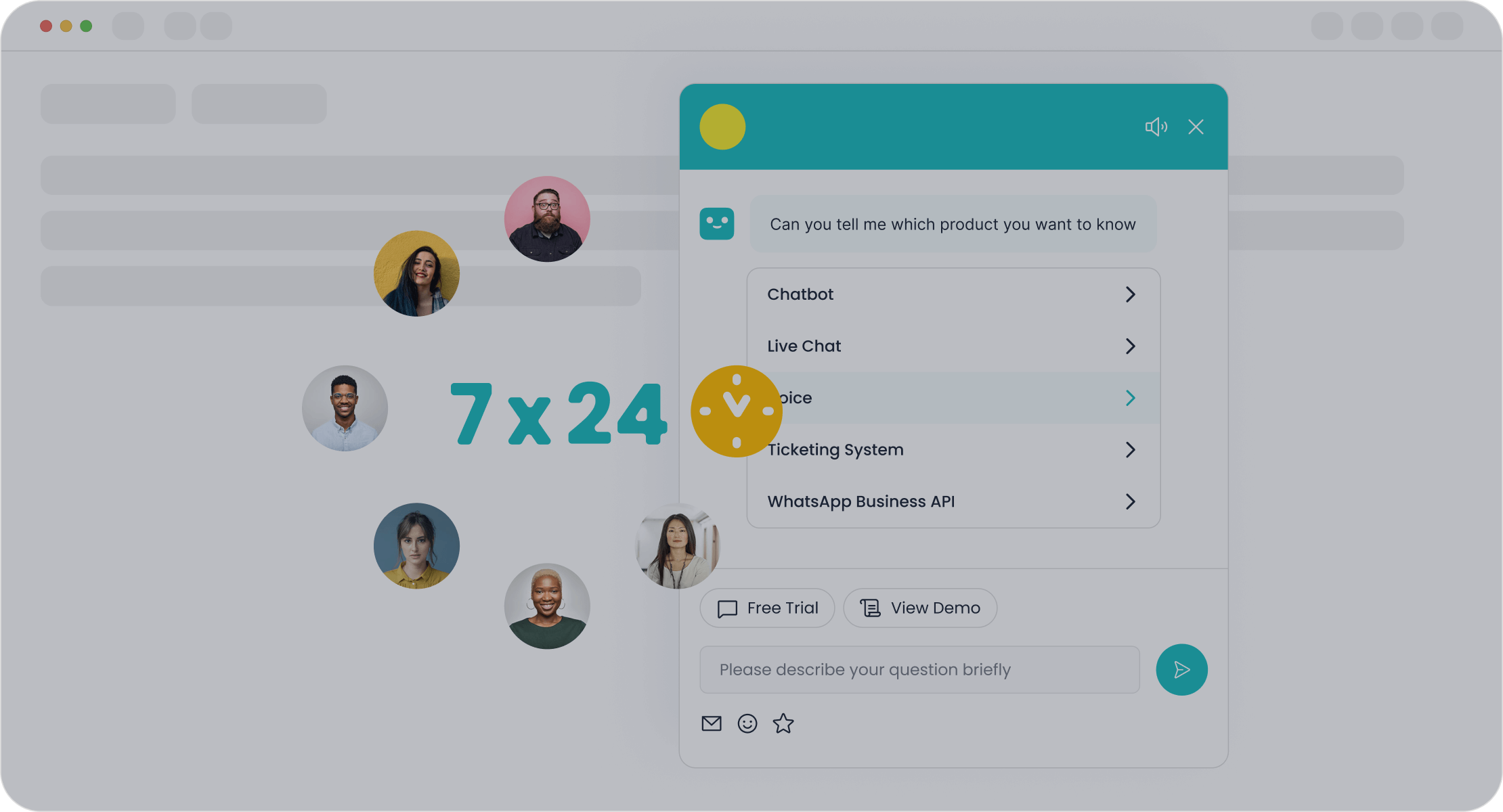
Automating Customer Support with AI Chatbots
AI chatbots have revolutionized customer support by automating repetitive tasks and providing instant responses. These tools handle inquiries like order tracking, FAQs, and return requests, freeing up your team to focus on complex issues. For example, 97% of communication service providers report improved customer satisfaction after implementing AI chatbots. Additionally, 82% of users appreciate the reduced wait times these bots provide.

Sobot's AI chatbot enhances customer interactions by operating 24/7 and offering multilingual support. It simplifies ticket responses, saving an average of 2 hours and 20 minutes daily for support teams. Businesses using AI chatbots also experience a 53% reduction in operational costs and a 40% improvement in client ratings. These benefits make chatbots indispensable for e-commerce businesses aiming to deliver efficient and cost-effective support.
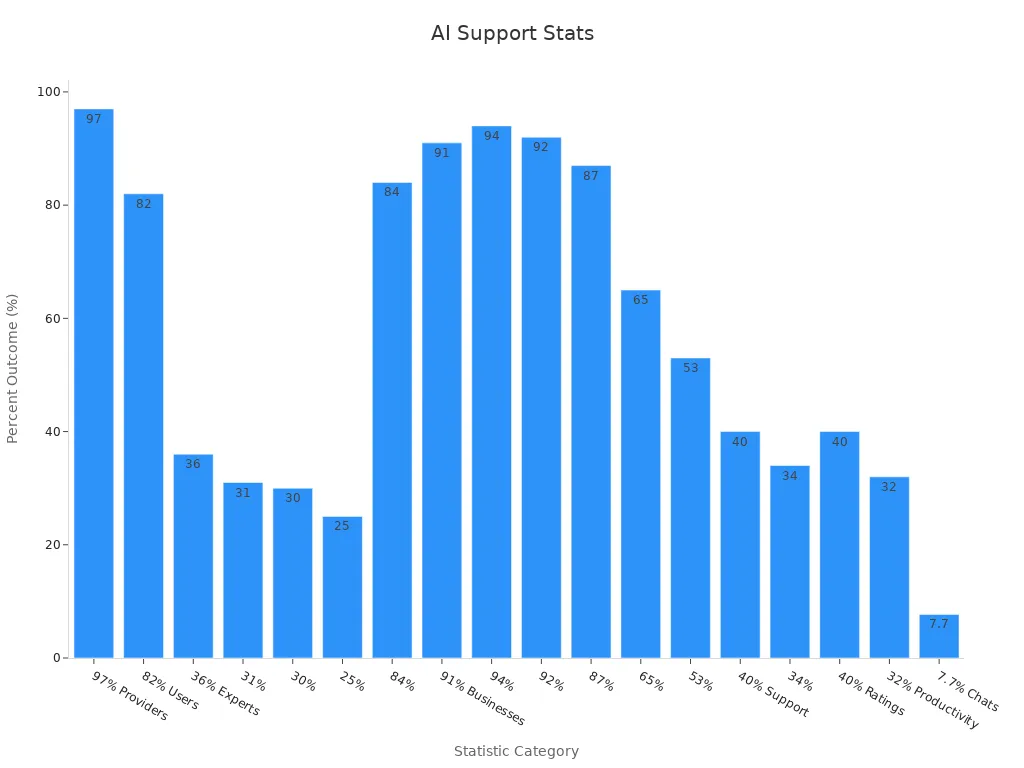
Enhancing Product Discovery and Recommendations
Chatbots improve the shopping experience by offering personalized product recommendations. They analyze customer preferences and browsing behavior to suggest items that match their needs. For instance, Nike's chatbot achieved a 100% precision rate in recommending running shoes, while Adidas saw similar success with sneakers. This level of accuracy boosts customer satisfaction and increases sales.
Sobot's chatbot tools excel in this area by leveraging a robust knowledge base to provide real-time assistance. Whether you're searching for specific products or exploring new options, these chatbots ensure a seamless shopping experience. Businesses using chatbot marketing strategies have reported a 67% increase in e-commerce sales, highlighting the value of AI-driven product recommendations.
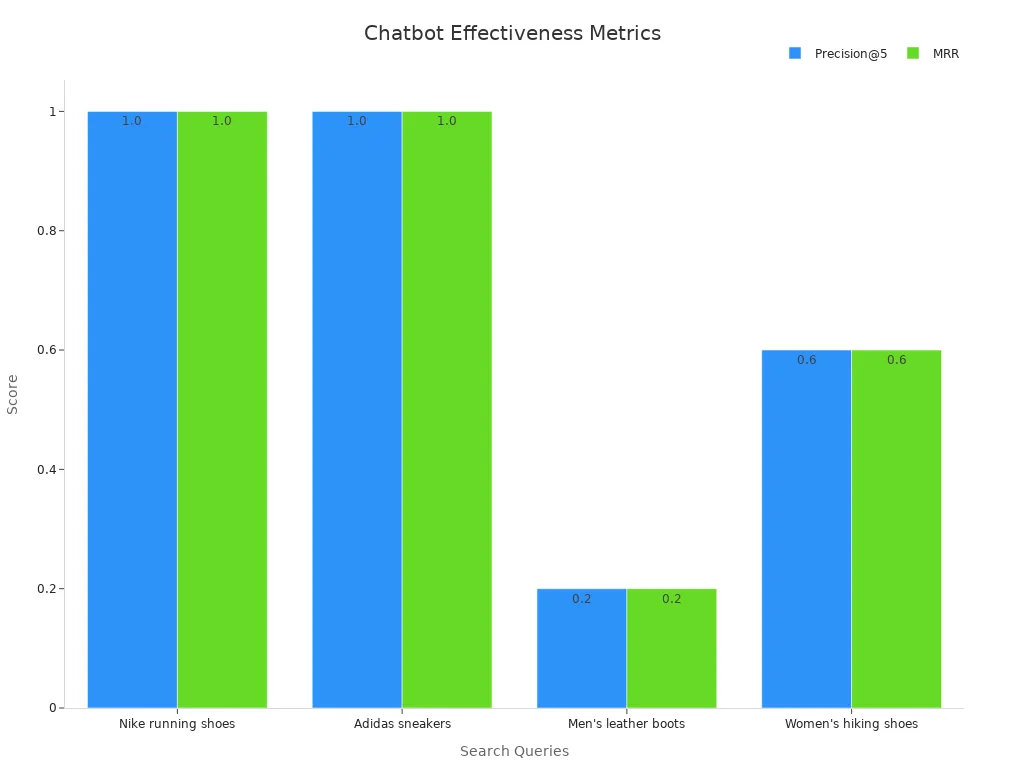
Streamlining the Checkout Process
Cart abandonment is a significant challenge for e-commerce businesses, with rates averaging 70%. AI chatbots address this issue by engaging customers in real-time and recovering abandoned carts through personalized interventions. Unlike generic email reminders, chatbots provide immediate assistance, such as answering questions about shipping or payment options.

Sobot's AI chatbot helps recover abandoned carts by sending proactive messages and offering tailored solutions. This approach can recover 10-15% of abandoned carts, directly impacting your revenue. By streamlining the checkout process, chatbots not only reduce abandonment but also enhance the overall shopping experience for your customers.
Managing Returns and Refunds Efficiently
Handling returns and refunds efficiently is crucial for maintaining customer satisfaction in ecommerce. Online purchases have a return rate of 30%, significantly higher than the 9% for in-store shopping. This disparity highlights the importance of a streamlined process for online retailers. Chatbots play a pivotal role in simplifying this process by offering real-time assistance to customers. They provide instant responses to inquiries about return policies, refund statuses, and eligibility, reducing frustration and building trust.
Automating routine questions allows your support team to focus on complex issues, improving overall efficiency. For example, Sobot's AI chatbot operates 24/7, ensuring customers receive help whenever they need it. This constant availability not only enhances the customer experience but also reduces abandonment rates during the return process. By integrating chatbots into your operations, you can handle returns more effectively, leading to higher customer retention and loyalty.
Real-World Success Stories (e.g., OPPO’s Use of Sobot Chatbot)
OPPO, a global leader in smart devices, provides an excellent example of how chatbots can transform customer service. By implementing Sobot's AI chatbot, OPPO achieved remarkable results in managing customer interactions. The chatbot resolved 83% of inquiries autonomously, allowing human agents to focus on more complex tasks. This efficiency contributed to a 94% positive feedback rate and a 57% increase in repurchase rates.
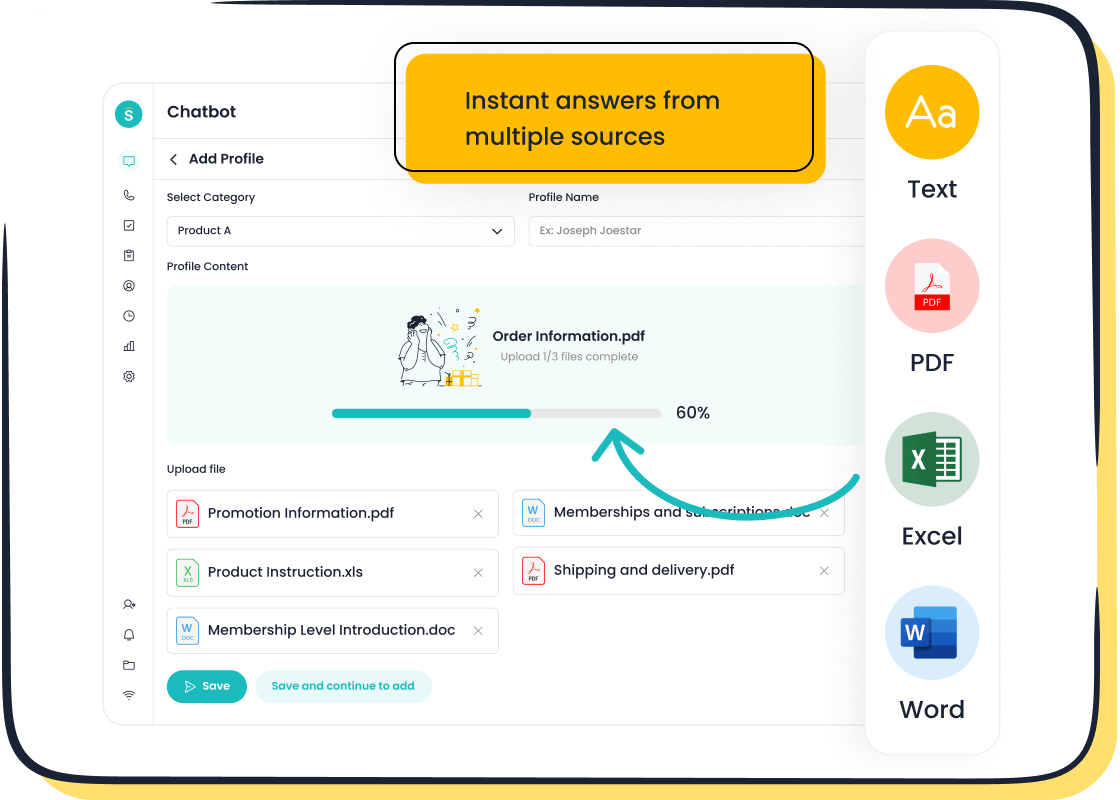
Sobot also helped OPPO optimize its knowledge base, reducing maintenance efforts by 90%. This improvement ensured accurate and timely responses to customer queries, further enhancing satisfaction. The integration of global customer channels streamlined operations, eliminating data fragmentation and improving service quality.
| Metric | Value |
|---|---|
| Chatbot Resolution Rate | 83% |
| Positive Feedback Rate | 94% |
| Reduction in Maintenance Efforts | 90% |
| Increase in Repurchase Rates | 57% |

OPPO’s success demonstrates the potential of ecommerce chatbot examples like Sobot’s AI chatbot. By providing real-time assistance and automating repetitive tasks, businesses can recover abandoned carts, improve efficiency, and enhance customer satisfaction.
Tips for Maximizing the Effectiveness of E-commerce Chatbots
Regular Updates and Training for AI Chatbots
Keeping your chatbots updated ensures they stay relevant and effective. Regular updates improve performance by 5-7% monthly during the first year of deployment. Continuous learning mechanisms, such as feedback loops, refine the chatbot’s ability to handle diverse queries. For instance, chatbots trained with robust exception handling reduce negative customer feedback by 63%. This proactive approach minimizes errors and enhances user satisfaction.
Training your chatbot with comprehensive data improves its natural language processing (NLP) capabilities. Sobot’s AI chatbot leverages multilingual training to deliver accurate responses across various languages. Additionally, integration training reduces average handle time by 84 seconds, ensuring faster resolutions. By prioritizing updates and training, you can maintain a chatbot that adapts to evolving customer needs.
Tip: Schedule regular performance reviews to identify areas for improvement and implement updates accordingly.
Monitoring Key Metrics for Chatbot Success
Tracking key performance indicators (KPIs) helps you measure the effectiveness of your chatbots. Metrics like user satisfaction scores and conversion rates reveal how well your chatbot meets customer expectations. For example, analyzing the goal completion rate alongside total users provides insights into its success in guiding customers through specific actions.
| Metric | Description |
|---|---|
| Conversion Rate | Percentage of users taking desired actions after interacting with the bot. |
| Satisfaction Rate | Average rating given by users evaluating the chatbot's responses. |
| Goal Completion Rate | Rate of users completing specific actions through the chatbot. |
| Non-response Rate | Frequency of instances where the chatbot fails to provide a response to user inquiries. |
Sobot’s AI chatbot simplifies monitoring with built-in analytics tools. These tools track metrics like bounce rates and average chat times, helping you optimize interactions. By continuously analyzing these KPIs, you can refine your chatbot strategies and improve customer satisfaction.
Integrating Chatbots with Omnichannel Solutions
Integrating chatbots into omnichannel solutions enhances customer experiences by providing seamless support across multiple platforms. Customers value 24/7 access to assistance without waiting in hold queues. This availability increases satisfaction and loyalty. For example, conversational AI improves communication by guiding customers through the sales funnel effectively.
Sobot’s omnichannel solution connects chatbots with platforms like WhatsApp and SMS, ensuring customers receive consistent support. This integration also gathers valuable insights into customer preferences and buying behavior. Businesses using omnichannel strategies report higher satisfaction rates and improved retention. By adopting this approach, you can streamline communication and deliver exceptional service.
Leveraging Customer Feedback for Continuous Improvement
Customer feedback plays a vital role in improving your e-commerce chatbot. By analyzing user reviews, you can identify gaps in your chatbot's performance and refine its capabilities. For instance, 70% of businesses discovered inefficiencies in AI interactions through customer reviews. Similarly, 60% noticed recurring dissatisfaction related to response accuracy. These insights help you address specific issues and enhance your chatbot's ability to manage diverse interactions.
You should actively engage your customer service team in reviewing chatbot interactions. Human agents often spot nuances that automated systems might miss. For example, they can identify patterns in user frustrations or highlight areas where the chatbot's tone needs adjustment. This collaborative approach ensures your chatbot evolves to meet customer expectations.
Transparency is another key factor. When customers see that their feedback leads to real improvements, they feel valued and are more likely to share their opinions. For example, Sobot's AI chatbot incorporates user feedback to optimize its multilingual capabilities and improve response accuracy. This commitment to continuous improvement builds trust and strengthens customer relationships.
To make the most of customer feedback, consider these steps:
- Collect Feedback Regularly: Use post-interaction surveys or satisfaction ratings to gather insights.
- Analyze Themes: Look for recurring issues, such as slow response times or unclear answers.
- Implement Changes: Update your chatbot's knowledge base and workflows based on feedback.
- Communicate Updates: Let users know how their input has improved the chatbot.
By leveraging customer feedback, you can ensure your chatbot remains effective and user-friendly. Tools like Sobot's chatbot make this process seamless by offering built-in analytics and optimization features. These capabilities allow you to track performance and make data-driven improvements, ensuring your chatbot continues to deliver exceptional service.
Tip: Encourage customers to share their experiences with your chatbot. Their insights are invaluable for driving continuous improvement.
E-commerce chatbots have redefined online retail by delivering instant, personalized, and efficient customer interactions. These ai-powered support tools not only enhance user experiences but also streamline operations, saving businesses up to 30% in costs. For example, 69% of consumers reported satisfaction with their last chatbot interaction in 2023, showcasing the growing trust in these tools. Businesses like OPPO have already demonstrated how chatbots can boost repurchase rates and customer satisfaction.
Sobot's chatbot for ecommerce stands out with its multilingual capabilities, 24/7 availability, and seamless omnichannel integration. It empowers businesses to automate repetitive tasks, nurture prospects, and provide tailored support, all while improving operational efficiency. By adopting and continuously optimizing chatbots, you can stay ahead in the competitive e-commerce landscape and build lasting customer loyalty.
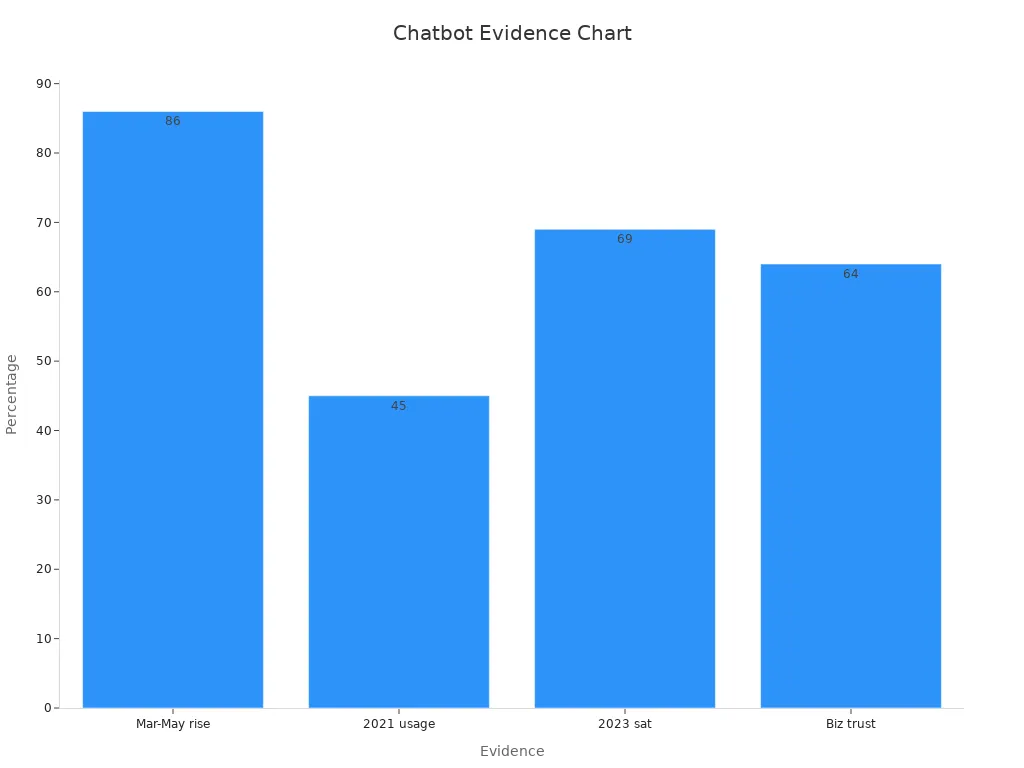
Tip: Start small by automating FAQs, then expand your chatbot's capabilities as your business grows.
FAQ
What are the key benefits of using e-commerce chatbots?
E-commerce chatbots provide 24/7 customer support, reduce operational costs, and enhance user experiences. They automate repetitive tasks, saving up to 30% on customer service expenses. Tools like Sobot's AI chatbot also boost conversions by 20% through personalized interactions and proactive messaging. These benefits make chatbots essential for online retail success.
Tip: Start with automating FAQs to see immediate results in efficiency.
How do AI chatbots improve customer satisfaction?
AI chatbots analyze customer behavior to deliver personalized recommendations and instant responses. For example, 69% of consumers reported satisfaction with their last chatbot interaction. Sobot's chatbot enhances this experience with multilingual support and real-time assistance, ensuring customers feel valued and supported throughout their shopping journey.
Can chatbots help recover abandoned carts?
Yes, chatbots can reduce cart abandonment by engaging customers in real-time. Sobot's AI chatbot sends proactive reminders and offers tailored solutions, recovering 10-15% of abandoned carts. This feature directly impacts revenue while improving the overall shopping experience for your customers.
Do I need coding skills to set up a chatbot?
No, you don’t need coding skills to set up a chatbot. Sobot's AI chatbot features a point-and-click interface, allowing you to design workflows effortlessly. This user-friendly approach ensures businesses of all sizes can deploy chatbots without technical expertise.
Note: A no-code platform like Sobot saves time and simplifies chatbot deployment.
How do chatbots support omnichannel customer service?
Chatbots integrate with multiple platforms like WhatsApp, SMS, and social media to provide seamless support. Sobot's omnichannel solution ensures consistent communication across channels, improving customer satisfaction. Businesses using omnichannel strategies report higher retention rates and better customer experiences.
Example: OPPO achieved a 94% positive feedback rate by integrating Sobot's chatbot into its global customer service channels.
See Also
Enhancing Customer Satisfaction Through Chatbots in E-commerce
Building Effective Chatbots for Successful Websites
Increasing Sales with E-commerce Live Chat Solutions